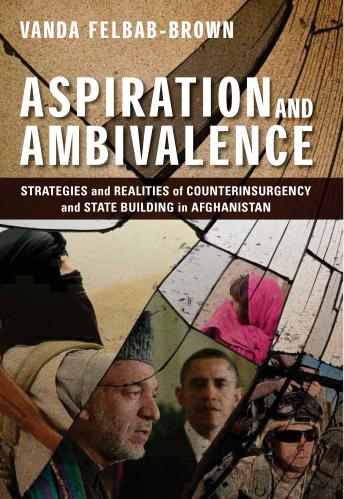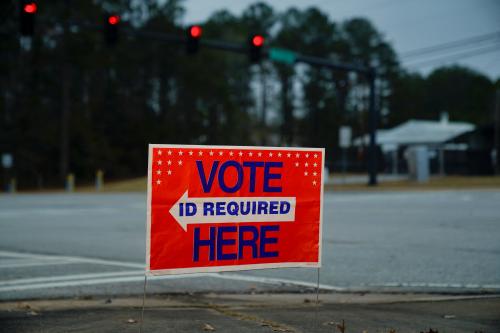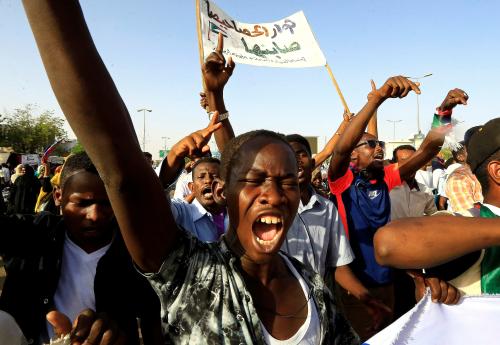Counter-terrorism strategies and tactics are rightly in the consciousness of officials and civilians in the wake of the Boston Marathon bombing. While preventing future attacks should be a leading priority for government at all levels, officials must take care not to focus only on the threat of terrorist attacks. Doing so could diminish the resources, preparation, and skills needed for management of other disasters, and therefore result in greater risk to the population.
Psychology of terrorism
The major characteristic of contemporary terrorism is its unexpectedness. The time and manner of attacks are unpredictable and catch targeted communities – normally innocent civilians – by surprise. In the past, targets of were often political and symbolic figures, not the general public, and the perpetrators proudly notified who they were and why they had acted. The purposes and targets of contemporary terrorism, on the other hand, are often very unclear. Terrorists attack innocent civilians indiscriminately without prior notification, making attacks more difficult to prevent.
Even though the physical damage from terror attacks is normally smaller than that from large natural disasters, the psychological damage of such terror attacks is significant. Early research performed by Paul Slovic and others in 1980s delved into this concept of psychological damage. Using psychometric methodologies, they defined several important characteristics of many different forms of risk. At that time, in the wake of the Three Mile Island (TMI) nuclear power plant accident in 1979, their main research target was nuclear power plants. Slovic underlined the importance of psychological effects of risk stating that “despite the fact that not a single person died (in the TMI accident), … no other accident in our history has produced such costly societal impacts.”[1] Reminiscent of today’s terror attacks, they concluded that the nuclear risk is unknown, dread, uncontrollable, involuntary, and likely to affect future generations, so it has a very critical impact on the minds of the general public. Contemporary terrorism shares many of these characteristics: it is usually unknown, frightening, uncontrollable, involuntary, and also indiscriminately fatal to even children (future generations). It surely has significant psychological effects on people’s minds.
Terrorism and media
For the news media, terrorism is a very strong “product” which easily attracts a lot of viewers. Most media aggressively sell the product, terrorism, and help sow fear as people enthusiastically consume the product. In a seminal work on the “social amplification of risk,” Roger Kasperson and colleagues[2] described how the public perception of risk interacts with social and cultural systems (such as the media) and can be amplified during the information delivery process, sometimes resulting in “institutionalized fear.” This amplification process can eventually generate certain public behaviors, some negative and some positive, and may result in disruptions in society. Obviously, some risks are more likely to be amplified than others. Terrorism, because of its special characteristics, is easily amplified. Also, today’s social network communication technologies, such as Facebook and Twitter, can accelerate and strengthen the amplification process.
Thus, the media focus and public concerns create political pressure, and national emergency management policymakers prioritize counter–terrorism, or “civil defense,” over other forms of risk management, such as “civil protection” against all hazards including natural disasters.
Civil defense again?
Culturally and historically, “civil defense” is quite different from “civil protection.” Civil defense, “born out of wartime efforts to organize air-raid precautions, sheltering arrangements and alarms for non-combatants,” has military origins and focuses on protection against foreign military attacks.[3] Civil protection, on the other hand, has disaster origins and focuses on many forms of natural and man-made disasters and other public safety issues. In the Cold War era, civil defense against nuclear attack was the main objective of national emergency management in the United States. At that time, nuclear attack was an “institutionalized fear” made by media and government authorities. Many American homes and public buildings prepared nuclear fallout shelters, illustrating this fear very clearly.
Following the end of Cold War and recognition of the increasing trend of large man-made and natural disasters, “civil protection” gradually replaced the term “civil defense” in most countries. Civil protection focuses more on generic disasters than on the armed aggression, and administratively it is more decentralized than civil defense. In the United States, the Federal Emergency Management Agency (FEMA) was established in 1979. It was mainly a civil defense organization during the Cold War, but in the last two decades has worked to redirect some resources toward the management of various disasters (civil protection). James Witt, director of FEMA under President Clinton, clarified this change of direction. As the FEMA website explains, “the end of the Cold War also allowed Witt to redirect more of FEMA’s limited resources from civil defense into disaster relief, recovery and mitigation programs.”[4] FEMA also introduced an “all hazards approach,” recognizing the many different kinds of disasters that may require mitigation, preparedness, response, and recovery.
The September 11, 2001 terror attack dramatically changed the direction of emergency management in the United States. After the attack, the United States hastily constructed the Department of Homeland Security and downgraded FEMA, whose main duty was civil protection. This attracted criticism from some public administration experts that the U.S. government concentrated too much on terrorism, perhaps because of the “social amplification” of the risk in the wake of the attack, despite the many other critical risks facing U.S. citizens. Basically, the critics charged, the United States changed the direction of its emergency management from civil protection back to Cold War-style civil defense.
Balance collapsed in emergency management
The cost of that shift in priorities was on full display when Hurricane Katrina struck New Orleans in 2005, easily destroying the weak levee system and submerging much of New Orleans under water. Federal and local governments’ mitigation, response and recovery to the Hurricane Katrina were mostly inadequate – resulting in the most severe disaster damage in U.S. history at that time. Due to budget cuts, the Army Corps of Engineers had been unable to strengthen the levee system protecting New Orleans. After the flooding and other damage occurred, the governments’ disaster situation awareness was poor. Communication among authorities and between authorities and civilians was broken. Assistance from the federal government was delayed and insufficient, and people died while awaiting rescue or other assistance. Critics also charged that too many government officials were not familiar with the “National Response Plan” which was implemented in December 2004 after 9/11 terrorist attack. Planning and training for large natural disasters were insufficient after the implementation of the plan. In short, too great a focus on counter-terrorism undermined capacities for natural disaster mitigation, response, and recovery in the post-9/11 United States.
This not only the case in the United States, however. The United Kingdom experienced a similar transition after the 7/7 London bombings in 2005, in which suicide attacks by four home-grown terrorists killed 55 civilians. In response, the U.K. government introduced several measures such as the Prevention of Terrorism Bill. Critics said that some responses to the attacks were anti-liberal, militarizing, and centralizing, and were in the wrong direction from the viewpoint of an all hazards approach. The problem, as one observer wrote, was that “too great a focus on one type of threat and on institutional preparedness can divert attention away from other problematic areas and distance the public.”[5]
In South Korea, the provocations of North Korea can divert the direction of national emergency management. South Korea had been under a thorough civil defense-oriented culture since the end of the Korean War in 1953. All citizens, for example, must participate in compulsory civil defense training preparing for military attacks from North Korea, and there is a military service requirement for men.
The mood of reconciliation that developed on the Korean Peninsula during the post-Cold War Kim Dae-jung and Roh Moo-hyun administrations (1998-2008) changed the direction of Korean emergency management policies, highlighted by the 2004 establishment of the South Korean National Emergency Management Agency (NEMA) by the Roh Moo-hyun administration. Large disasters such as Typhoon Rusa in 2002 and the Daegu subway accident in 2004 demanded a comprehensive emergency management system that can manage the all types of hazards, not only a military attack by North Korea. South Korea is gradually replacing its civil defense culture with one of civil protection. The Lee Myung-bak administration (2008-2013) established the Ministry of Public Administration and Security (MOPAS) in 2008. MOPAS enlarged the scope of disaster management to include fostering a safety culture and anticipating future disasters induced by climate change. The Ministry has proposed civil protection strategies such as promoting public safety awareness, strengthening leadership of local governments, and promoting participation of private companies in disaster preparation and mitigation. Also, MOPAS pushed ahead several projects like the “Safe City” initiative that tries to enhance the safety level of local communities by encouraging the participation of various local stakeholders in preparation, mitigation, and response planning an activities. This means that the civil protection ideals and an all hazards approach were widely adopted as a government policy direction at that time.
However, the bombardment of Yeonpyeong Island by North Korean forces in November 2010, which was unexpected and resulted in four deaths, changed this trend back again. After the Yeonpyeong Island bombardment, most projects for disaster and safety management were canceled and delayed because the highest priority was placed on national defense against North Korea. To some extent, this mirrors the experiences of the United States after 2001 and the United Kingdom after 2005. Although the deaths by Yeonpyeong Island bombardment were relatively few compared 209 deaths in Typhoon Rusa and 192 deaths in the Daegu subway accident, the political impact on the Korean government was huge.
Keeping a balance in emergency management
Civil protection and an all hazards approach are vital to maintaining preparation and the best possible response to major natural and man-made disaster. But they can be weakened if governments focus too heavily on national security (including civil defense against terrorism). And that can result in the other large disasters. Keeping balance in emergency management planning, and implementing an all hazards approach are crucial to effect public administration in this area.
The United States is at risk from a diverse range of natural and man-made disasters. Climate change will produce historically strong hurricanes like Katrina and Sandy more and more frequently. There is a high possibility of large earthquakes and outbreaks of new pandemic diseases. As indicated by the recent Texas fertilizer plant explosion, man-made disasters can also have big impacts. To cite another area where civil protection should not be neglected, the number of road fatalities per one million inhabitants was 111 per million inhabitants – or, well over 30,000 individuals – in the United States in 2009. This rate is almost three times Japan’s rate of 45 fatalities per one million inhabitants, and higher than the European Union average of 70 fatalities per one million inhabitants.
How do we keep balance in emergency management? Though officials in democratic countries such as South Korea and the United States must respond to public opinion, approaches to emergency management should be decided neither by public opinion, which can be easily agitated by shocking incidents, nor by the news media which tend to follow sensational events. Although the number of casualties in the Boston terror attack was much smaller than Texas explosion, the psychological impact and news attractiveness of Boston were much higher. Indeed, the news of the Texas fertilizer plant explosion was almost swept away in an ocean of news about Boston. Instead, priorities in emergency management should be decided based on the scientific evidence, accurate statistics, and rational policy planning.
Counter-terrorism is necessary and obviously very important. Governments must take policy measures to prevent terrorism, but they should resist contributing to institutionalized fear. They must also remember that human beings are surrounded by a plethora of risks, many of which cause more physical damage than terrorism. Governments should prepare policy measures for mitigation, preparedness, response, and recovery for all hazards we can encounter, and should keep a balance based on sciences and accurate statistical data.
For this purpose, a number policy measures are appropriate. First, we need a clear cost-benefit analyses of the current policies in emergency management. According to research conducted by John Mueller and Mark G Stewart and published in 2011,[6] the United States has spent over $1.1 trillion on homeland security after 9/11; Mueller and Stewart evaluate the effectiveness of this massive spending as very low. If this money, or some of it, had been applied to other public safety areas, such as climate change mitigation or industrial safety management where the cost effectiveness is high, the United States could be a safer place.
Second, people should know what the real risks are. The well known risks such as traffic accidents, industrial accidents, and floods kill far more people in America than terrorism does. According to several psychological research studies, familiarity can reduce the level of the public’s risk perception. So, there is a much smaller sense of urgency about many of the risks that surround us every day. Science and statistics on risks, and governmental efforts to provide information and education about risks, can help individuals and local communities effectively increase their overall safety level.
[1] Slovic, P. “Perception of Risk,” Science, Vol. 236, No. 4799 (1987): 283.
[2] Kasperson, R., Renn, O., Slovic, P., Brown, H. and Emel, J. “Social Amplification of Risk: a Conceptual Framework,” Risk Analysis, 8(2), (1988): 177-187.
[3] Alexander, D. “From Civil Defense to Civil Protection–and Back Again,” Disaster Prevention Management, 11(3), (2002): 209.
[4] FEMA, about the agency, http://www.fema.gov/about-agency.
[5] O’Brien, G. “UK Emergency Preparedness: A Step in the Right Direction?” Journal of International Affairs, Vol. 59, No. 2 (2006): 79.
[6] Mueller, J. and Stewart, M.G., Terror, Security, and Money: Balancing the Risks, Benefits, and Costs of Homeland Security (New York: Oxford University Press, 2011).








Commentary
Op-edCounter-Terrorism and Emergency Management: Keeping a Proper Balance
May 7, 2013